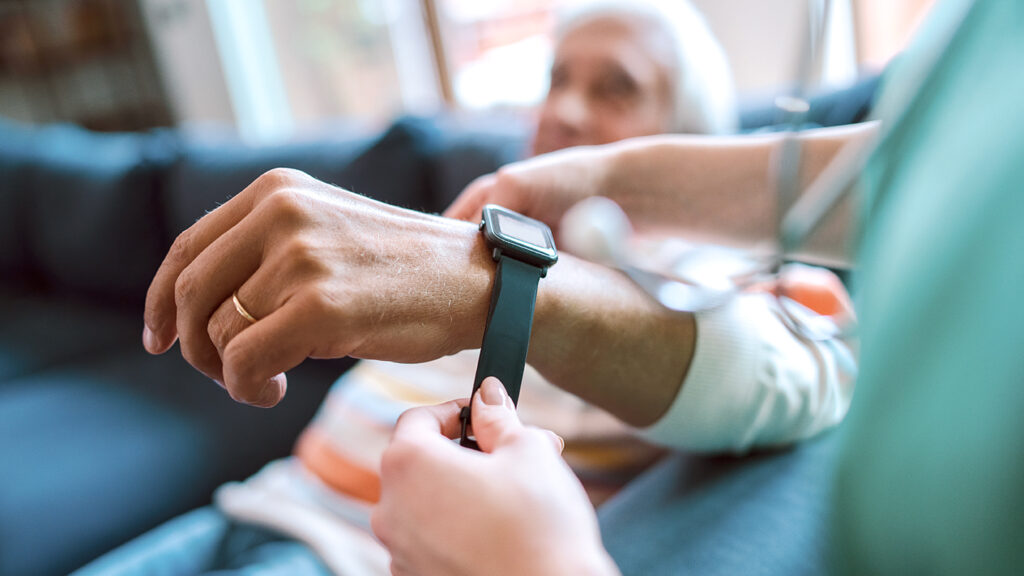

Patient monitoring devices are no doubt a valuable safety tool for seniors. But if the technology is too difficult for patients to use, it isn’t likely to be adopted, experts note.
The keys to increasing the adoption of remote patient-monitoring tools are clear communication, data reliability and ease of use. These are all things that senior living administrators, as well as families and caregivers, should keep in mind, emphasized Darryl Hollar, director of digital health at Mount Sinai Health System, and Cathleen Mathew, director of condition management and population health at Mount Sinai Health System, at last week’s HIMSS convention. They offered advice on increasing adoption of remote patient monitoring tools.
Mount Sinai Health System’s remote patient monitoring program focuses on hypertension, but the health system also includes monitoring for heart failure, pregnancy, COPD, diabetes and COVID-19.
Some 40% of Mount Sinai’s patients didn’t have a smartphone when they enrolled in the program, according to Mathew, and 52% of those patients had limited access to broadband. Still, engagement in the program is high, with 70% of patients testing for these conditions every other day, due to patient training and support.
“That … speaks to the point that by providing patients with devices that are easier to use, even if they may not seem tech savvy necessarily, with the right support, we’re able to meet them where they are and get to these goals,” Mathew explained.
Investment in easier-to-use technology also boosts adoption, as does clear communication and coordination between patients and providers, Hollar added, saying that health systems should have all necessary information before a patient needs to call and ask for information about each check-in.
The bottom line, observers agree, is that safety technologies for seniors must be easy to use. For example, one recently-launched AI-powered sensing technology, Cherish Serenity, which monitors health and safety via biometrics and motion sensors, plugs into a wall and doesn’t require charging, unlike wearable devices like Fitbits and smartwatches.
Making sure new technologies can effectively monitor and improve patient care and safety starts with getting patients to use them, experts agree. Training, communication and ease of use goes a long way towards achieving this goal, they add.


